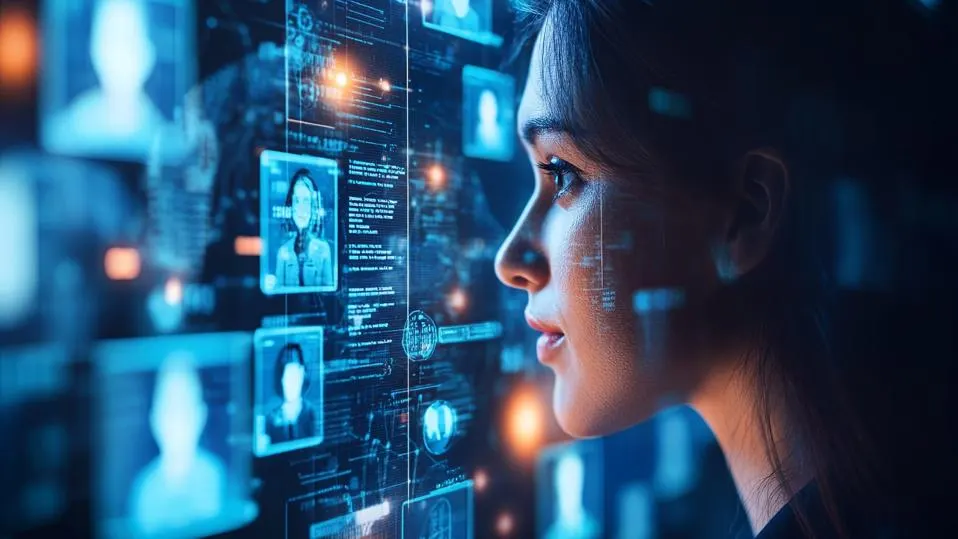How To Create Your Digital Avatar For The Metaverse
6 June 2022
If you’ve ever seen my TikTok channel, you will have come across Bernard Marr 2.0. He looks and sounds a lot like me, but he is, in fact, my digital twin – an avatar powered by AI and machine learning.
Avatars are our digital representatives in the virtual world. The characters we control in video games can be thought of as avatars, and increasingly we will adopt avatars to represent us as we shop, socialize, learn and work in the connected online environments that we are calling the metaverse.
Bernard 2.0 has my face and voice because he was built by Synthesia from images and recordings and stitched together using machine learning. He presents videos for me – not necessarily because I couldn't present them myself, but because it's a cool thing to do, and the technology is a lot of fun.
And one day, in the future, as AI becomes more and more capable, he might do a whole lot more. He could give talks, teach classes, conduct meetings and seminars on my behalf – and possibly even write my books!
In fact, it’s possible that one day, everyone might have their own digital avatar that they can send off into the digital domain to do whatever they need to get done. Even today, we are seeing them used in a growing number of ways, such as:
A number of companies use digital avatars to carry out customer service – they can either be directly controlled by one person, for one-to-one interaction, or they could be powered by chatbots, enabling them to handle many customer inquiries simultaneously.
They can also add a human touch to synthetic video – appearing in content such as corporate training videos and how-to guides in place of more expensive and unpredictable human actors.
Digital avatars have also been used in healthcare and therapeutic settings – such as to teach social and interaction skills to children with autism.
They are also becoming widely used in media and entertainment. Businessman Alan Sugar appeared as an avatar to set the contestants' tasks in the most recent UK series of The Apprentice, and Game of Thrones star Maisie Williams appeared as an avatar to promote her role as a global ambassador for sustainability for H&M.
How to create your own avatar today
There are a number of tools and services that anyone can use right now if they want to get started with creating their own digital avatar.
Traditionally, digital avatars can be as simple as a 2D image used to identify us on social media or in an online chatroom.
The next step in their evolution came with the arrival of 3D online environments such as Second Life (in many ways an early prototype metaverse) and later platforms such as Meta Horizon Worlds.
These days, however, they can also be super-realistic looking – like my own, which was built from video images and is almost indistinguishable from the real thing.
Each has its advantages. More realistic avatars might create more immersive experiences for viewers or anyone interacting with them. Simpler ones are far quicker and cheaper to create and can also be more flexible. For example, you can quickly change their clothes, accessories, or hairstyles to suit different purposes or environments!
A number of providers offer the service. Synthesia allows you to create very realistic, high-end avatars for use in synthetic video content.
Ready Player Me is a service for creating full-body, 3D avatars that can then be exported into a range of different metaverse environments, including VRChat and Somnium Space.
Bitmoji is a tool that has been around for a while and lets anyone create cartoon avatars. Using a software development toolkit, they can then be imported into a large number of games and apps, allowing users to take their personality with them as they move between virtual worlds.
You can even use a service like Tafi that lets you dress up and decorate your personalized avatar with branded items from global names, including DC Comics, Coca Cola, and Champion. Accessories are sold as NFTs, allowing you to show off the fact that your digital twin is wearing something authentic and unique!
Related Articles
11 Most Reliable AI Content Detectors: Your Guide To Spotting Synthetic Media
Since the launch of ChatGPT just two years ago, the volume of synthetic – or fake – content online has increased exponentially.[...]
The AI-Powered Citizen Revolution: How Every Employee Is Becoming A Technology Creator
Something remarkable is happening in organizations around the world.[...]
6 Mistakes IT Teams Are Guaranteed To Make In 2025
The next wave of artificial intelligence isn't just knocking at enterprise doors - it's exposing fundamental flaws in how organizations approach technology transformation.[...]
2025’s Tech Forecast: The Consumer Innovations That Will Matter Most
Consumer technology covers all of the tech we buy to make our lives more convenient, productive or fun.[...]
7 Healthcare Trends That Will Transform Medicine In 2025
Healthcare has evolved dramatically in recent years, with technology driving countless new opportunities, just as demographic and societal factors have created new challenges.[...]
The Simple ChatGPT Trick That Will Transform Your Business AI Interactions
I believe ChatGPT and other generative AI tools can help pretty much any business.[...]
Sign up to Stay in Touch!
Bernard Marr is a world-renowned futurist, influencer and thought leader in the fields of business and technology, with a passion for using technology for the good of humanity.
He is a best-selling author of over 20 books, writes a regular column for Forbes and advises and coaches many of the world’s best-known organisations.
He has a combined following of 4 million people across his social media channels and newsletters and was ranked by LinkedIn as one of the top 5 business influencers in the world.
Bernard’s latest book is ‘Generative AI in Practice’.










Social Media